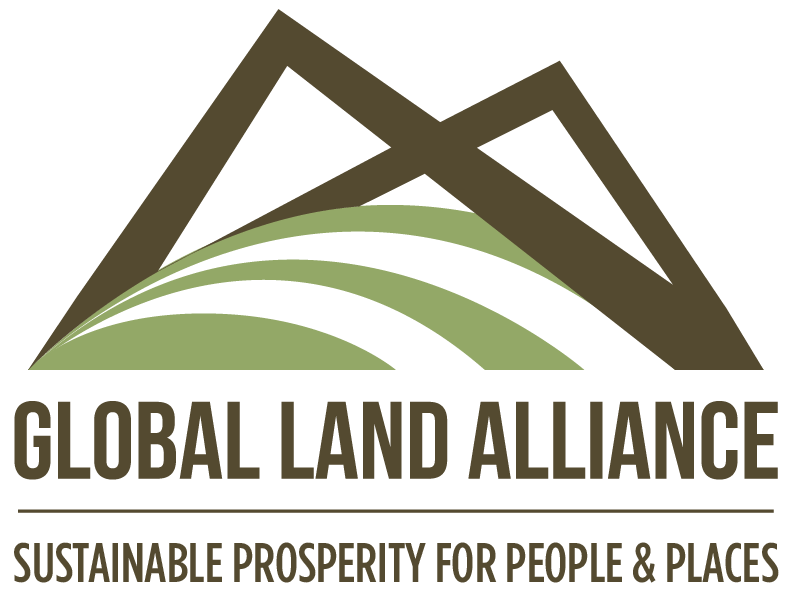New IPCC Climate Report Stresses Indigenous & Local Land Rights 58 times: Let’s Respond with a Concrete Tenure Plan
By Anna Locke and Malcolm Childress
This article was originally published by Mongabay on March 3. 2022
A Zambian villager displays a map of her community’s land. People confirming that individual plots of land are accurately depicted are then given a land certificate conveying rights to farm and use the land. Image by Sandra Coburn for Oakland Institute.
Actions to strengthen land access and tenure security of Indigenous and local communities are central to one of the new IPCC report’s five areas recommended for systemic change.
Ramping up the recognition of land rights could help to preserve enough of the natural world to pull the climate back from the brink, the authors of a new op-ed argue.
“We need a plan now, one with targets and deadlines, and crucially in terms of land rights, detail on how it will be monitored and enforced. Let’s do this before COP27 or we may run out of time,” they write.
This article is a commentary. The views expressed are those of the authors, not necessarily of Mongabay.
The latest IPCC climate report mentions tenure security a whopping 58 times. This is a welcome shift in emphasis from the UN – strengthening land rights is a just and sustainable way to protect vulnerable landscapes in the climate fight, and one that works.
By the report’s own estimate, time is almost up. As we push closer to the point of no return, the world needs to stop talking and start acting. Ramping up the recognition of land rights could help us preserve enough of the natural world to pull us back from the brink.
The report recognizes that securing the rights of Indigenous peoples and local communities (IPLCs), livestock herders and farmers encourages sustainable farming and forestry, protects wildlife and habitats, enables people to live sustainably off their lands, and reduces the risk of climate actions like reforesting harming communities.
Indeed, actions to strengthen land access and tenure security are central to one of the report’s five areas of systemic change needed for a fair switchover to a green economy. The report also says that tenure insecurity limits people’s ability to adapt to climate change, while strengthening IPLC rights could transform the way we manage tropical forests.
Indigenous activist speaks at a demonstration during climate treaty negotiations in Madrid. Image courtesy of Friends of the Earth International via Flickr..
At COP26, countries and major donors announced their intention to repurpose public funding that supports agriculture to encourage more sustainable farming and pledged $1.7bn up to the end of 2025 specifically to recognize Indigenous and local community land rights.
Yet there are no concrete plans for how to allocate this money – we still need to agree whose rights will be recognized and where.
We know that some money will go to mapping and documenting rights, but more needs to be done to ensure IPLCs can exercise these rights and that they result in positive climate and environmental outcomes. If we are to uphold climate justice, this money must be channelled to the longstanding users of vulnerable land and compensate them for the invaluable service they already provide – reducing forest loss and degradation, enhancing biodiversity and protecting ecosystems.
The data gathering described above is a complicated job – we’re talking about mapping a hugely diverse group of people spread all over the world who manage around 28% of the world’s land. We need to unpick whose tenure security is weakest and where that is having the greatest impact on forest and biodiversity loss and land degradation. And we need to understand what is driving that insecurity in each case to tackle those issues.
Perceptions data can provide a quick, cost-effective way of monitoring this disparate group in a globally comparable way. Assessing how worried people are about losing their land in the foreseeable future – or how likely they think that will be – gives us a direct measure of how secure individual and community tenure is and why, that goes beyond simply recording if someone holds a title or deed.
The Prindex 2020 global dataset revealed for the first time that 1 in 5 people in the world fear eviction – this was possible because our nationally representative surveys enable like-for-like comparison across countries with widely different housing markets and land governance systems.
This kind of subjective data is also a better predictor of future behavior than other measures of tenure security, which is crucial if we want to incentivize sustainable land use. Cultural practices and social norms, awareness of rights, corruption and the capacity or will of authorities to enforce rights can make people more or less secure whatever their legal status.
The IPCC report says our window to act is closing; going beyond 1.5 degrees means no way back on many fronts. Safeguarding as much of the natural world as possible is our best shot at recovery – that’s why we need to massively accelerate and scale up the recognition of IPLC rights and ensure farmers feel confident that they can stay on their land for the foreseeable future.
This will be the last assessment report before it’s too late – we need a plan now, one with targets and deadlines, and crucially in terms of land rights, detail on how it will be monitored and enforced. Let’s do this before COP27 or we may run out of time.


